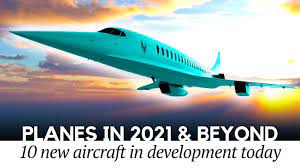Augmented reality, artificial intelligence, and autonomy are just some of the technologies that elevated our air and space game in 2021. AI algorithms are helping route aircraft in more efficient ways, virtual enemies are training pilots mid-flight, and autonomous wingmen are scouting the skies ahead. Meanwhile, up in space, a NASA probe is going to sail beyond Earth’s orbit on sunlight. It might all seem like flashy, futuristic stuff, but one winner represents a small but impactful perk for passengers: On some United flights, you can now use wireless headphones to connect to the seatback entertainment system via Bluetooth. Finally!
Take a flight between any two airports, and a dispatcher at the airline also serves a key purpose: They decide in advance what route the aircraft will take along the way, filing a flight plan with the FAA before takeoff. These humans working on the ground must consider variables like weather, restricted military airspace, and more. Often, they just go with a pre-existing option. Now, at Alaska Airlines, the dispatchers have an AI helper. Created by startup Airspace Intelligence, the software can suggest bespoke routes between cities, which the dispatcher can then accept or not. The suggestions result in an efficiency boost: Alaska Airlines says that since they started using the system, more than 28,000 flights have had their routes optimized, saving an estimated 15.5 million pounds of fuel and thus 24,490 tons of carbon dioxide emissions. The flights tend to land a couple minutes sooner, and not only that, the airline also has a more precise sense of when a plane will actually touch down. Passengers, meanwhile, will hopefully spend less time just circling the airport, waiting to arrive.
SpaceX is betting its future on one very large vehicle. The approximately 165-foot tall stainless steel Starship aims to reach Earth’s orbit, the moon, or even Mars, and then return in one piece by landing vertically. In the future, the fully reusable spaceship could even ferry people and cargo across the globe in less than an hour. Elon Musk’s science-fiction dreams have been slow to achieve lift off—the first handful of test flights ended in spectacular fireballs. But in May, a Starship prototype finally nailed its landing, showcasing a complex “bellyflop” maneuver that involved a horizontal free-fall from miles in the sky before the craft righted itself just above the launchpad. In the following months, the company began building colossal booster rockets to prepare for the first orbital test of what could become the world’s most powerful and affordable launch system.
Plugging in headphones while trying to catch Frozen II on your seatback entertainment system is very last-century. No longer: Starting this past summer, passengers on any United 737 MAX 8 aircraft could simply connect to the Panasonic system in front of them via Bluetooth with their own headphones (AirPods or otherwise). A metal tube full of competing wireless signals represented a complex problem to solve, but in the end, those Disney songs never sounded so good.
Source : https://www.popsci.com/technology/best-aerospace-innovations-2021/









